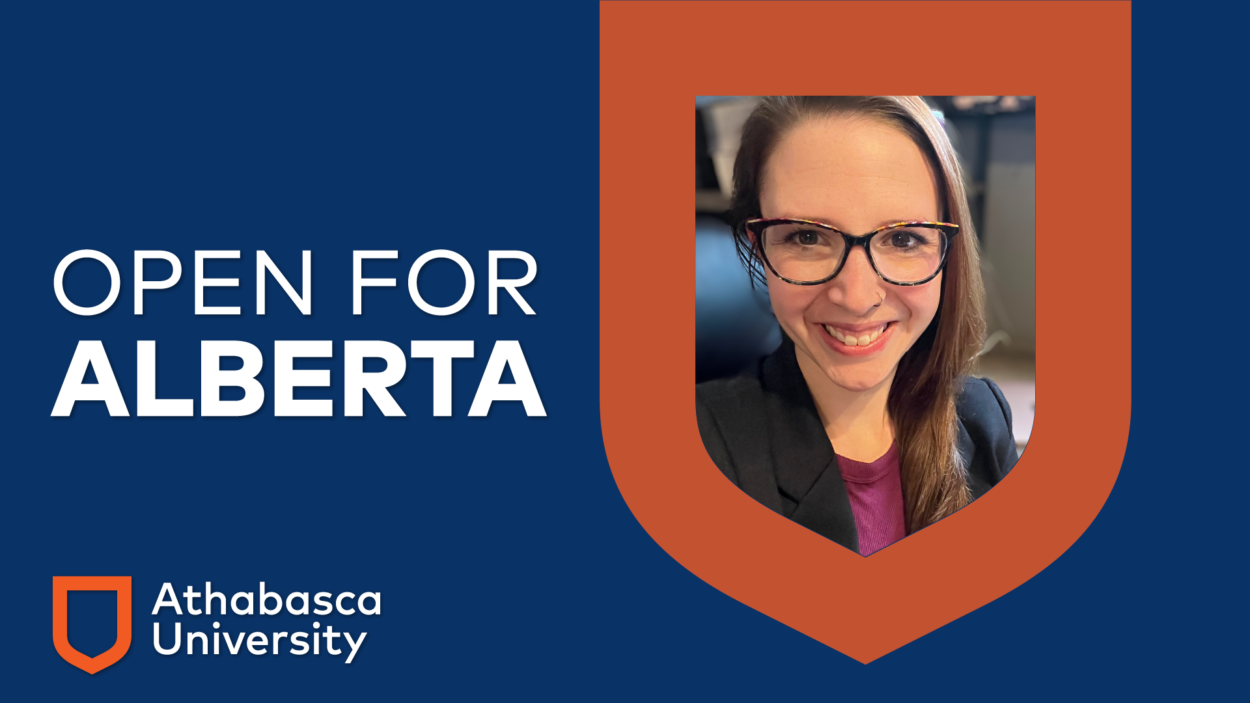Nurse practitioner student wants to ‘do more’ for rural health care

Wider scope of practice of nurse practitioners appeals to Grande Prairie student
As a registered nurse, Chantelle Gray knows she makes a difference to the health and lives of the patients in her care.
Working at different times in emergency, pediatrics, and neonatal intensive care at Grande Prairie Regional Hospital, she’s had opportunities to see and treat complex health conditions. Patients come to the hospital from rural communities throughout the Peace region in northwestern Alberta. The work has always been challenging and rewarding, but deep down she wanted more—for herself and her patients.
“I felt like taking on an expanded role in health care might help me feel more satisfaction, and to be able to offer patients a more proactive role in their health,” says Gray.
“I felt like taking on an expanded role in health care might help me feel more satisfaction, and to be able to offer patients a more proactive role in their health.”
– Chantelle Gray, Master of Nursing – Nurse Practitioner student
So in 2019, Gray enrolled in Athabasca University’s (AU) online Master of Nursing – Nurse Practitioner program. She’s now in her final year of study and hopes to continue working in the Peace region and using her skills to help patients from rural communities feeling the effects of a strained health-care system.
“The need is huge. Grande Prairie is in a very bad spot right now for primary care.”
Nurse practitioners ‘do more’ for patients
Nurse practitioners are highly specialized primary health-care providers with a scope of practice similar to family physicians. They can work independently and diagnose patients, manage referrals, order tests, prescribe medications, and more.
AU trains more nurse practitioners than anywhere else in Canada. More than one-third of practising nurse practitioners in this country are AU grads.
As Albertans feel the effects of physician shortages and lengthy wait times at hospitals, nurse practitioners offer an important option for patients in need of urgent and primary care. It’s something Gray herself has felt as a mom of 2 young children, being unable to find a family doctor for basic things like routine health screenings.
“It’s very challenging to be accessing that through walk-in services,” she says. “And for people with chronic health conditions like diabetes or high blood pressure, it’s very challenging to get prescriptions and lab work.”
Family, flexibility, and rural living
Family was a major factor in wanting to become a nurse practitioner, and in choosing AU’s online master’s of nursing program. Gray says she had grown weary of 12-hour hospital shifts and working weekends—even more so since having children, aged 3 years and 9 months.
Born in Grande Prairie and raised in the Peace region, Gray found only AU allowed her to remain in her community. Other programs would require moving to major centres and taking time off work. AU’s program had a strong reputation, she says, but the online learning model also meant she could work part-time at the hospital. In fact, she went on maternity leave twice during her studies.
“Flexibility has been a huge part of it,” she says. “I can take a semester off if I need to and not lose my standing in the program. I can learn from the comfort of my home while my kids are sleeping. That’s been huge.”
Besides, leaving wouldn’t help a region that’s seen a lot of primary care providers close their practices or move into specialty roles.
“We just don’t seem to be able to recruit and retain primary-care providers here.”

1 in 4 Albertans without access to primary care
It’s not just Grande Prairie residents who are feeling the effects. Province-wide, 1 in 4 Albertans do not have access to primary care, according to a recent report from the Nurse Practitioners Association of Alberta. Gray believes nurse practitioners can and should be part of the solution to fill that gap.
By improving access to health care, nurse practitioners can be proactive in treating patients, performing regular screenings, and preventive health care, she says.
“The whole point is we can have people come in regularly with a nurse practitioner who can guide you in your health journey and help you make the choices that are best for you.”
Improving health care
Gray credits the Nurse Practitioners Association of Alberta and others for pushing the Alberta government to depend more heavily on the profession by funding them through the public system. Unlike family physicians, nurse practitioners cannot bill Alberta Health directly for their services. That complicates opening nurse practitioner-run clinics because patients would have to pay out of pocket or through personal health plans.
“I know a few nurse practitioners here that are very interested in opening a nurse practitioner-led clinic. But when you can’t bill for your services … it’s just not accessible for the population you’re wanting to reach.”
“There's a lot more physicians and other allied health professionals that are really starting to see the benefit of nurse practitioners and the difference that a nurse practitioner can offer.”
– Chantelle Gray
Gray says she’s hopeful that the government will eventually agree to changes that will help the profession. There’s too much at stake for health care to not take advantage of highly skilled professionals who just want to help patients—and the entire system—get better.
“There’s a lot more physicians and other allied health professionals that are really starting to see the benefit of nurse practitioners and the difference that a nurse practitioner can offer,” she says. “So, yeah, you’d like to be part of the solution.”
Online learning critical to health care in Alberta
Read more stories about how AU and our students and alumni are working to solve health-care challenges in Alberta and beyond.